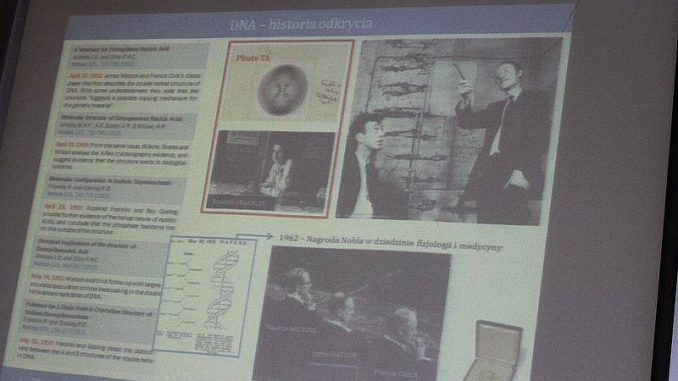
Dr. Eng. Jacek Nizioł
AGH University of Science and Technology
DNA not only for biologists
Deoksyrybunukleinowy acid (DNA) from a chemical point of view, is a statistical copolymer containing deoxyribose, phosphoric acid residue and one of the four bases (adenine, thymine, cytosine or guanine). It was found that the sequence of rules virtually no effect on the physicochemical properties of the DNA treated as a continuous material in the supramolecular scale. The properties of this biopolymer differ, however, even in terms of quality, from the typical properties of polymers produced synthetically.
Over the last decade we saw a significant increase in interest in the use of DNA in electronics and photonics, based on the use of organic materials. A variety of fully active electronic components using the biopolymer. Examples include light emitting diodes or FETs. In known systems, the introduction of a thin layer DNA has greatly improved operating parameters of such devices.
Although DNA has been known for more than 60 years, the accumulated knowledge about this biopolymer basically refers to the situation when it is in aqueous solution. This line of research was justified because of its biological significance. About the properties held in the form of a solid little is known. Moreover, some experiments leads to contradictory conclusions (for example, in terms of electrical conductivity).
In the first part of the seminar will be presented in a panoramic basic characteristics of DNA and frequently described in the literature practical applications of DNA in the form of a solid. The second part will present the results of research on the physicochemical properties designer DNA in solid form by such techniques as controlled hydration, 1 H-NMR, TGA, DSC, various types of infrared spectroscopy, ellipsometry spectrometric, dielectric spectroscopy and X-ray diffraction.
Gallery